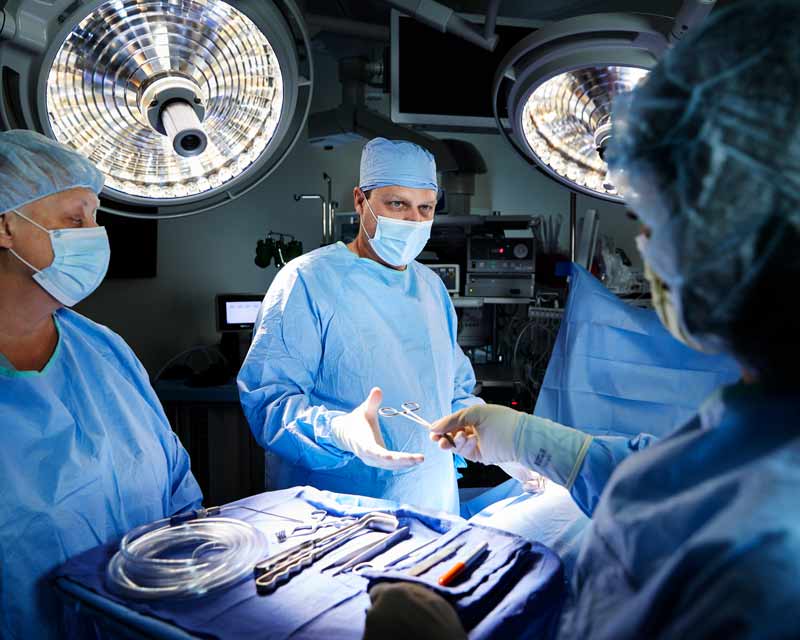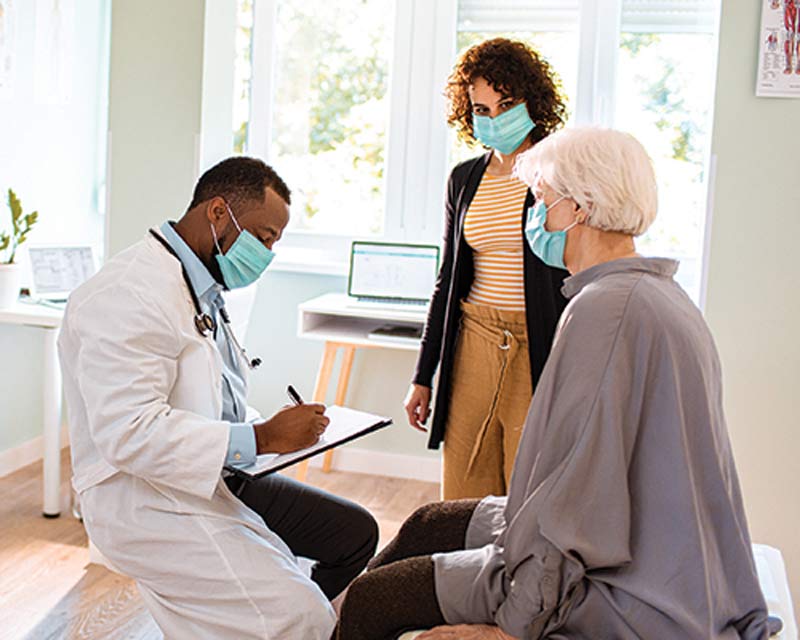
Comprehensive Esophageal Health Center opens with more convenient, streamlined care
 Clinic aims to improve care for patients with cancer that has steadily increasing incidence rates
Clinic aims to improve care for patients with cancer that has steadily increasing incidence rates
A new clinic focused on the prevention, early detection and optimal treatment of anal cancer is expected to open at The Ohio State University Comprehensive Cancer Center — Arthur G. James Cancer Hospital and Richard J. Solove Research Institute (OSUCCC – James) in February 2022.
The clinic, which will be housed at Ohio State Martha Morehouse Outpatient Care, grew out of a desire to ensure that those at high risk of anal cancer receive the most appropriate care, explains Syed Husain, MBBS, who is serving as the clinic’s lead physician.
Over the years, it became clear that patients referred to The Ohio State University Wexner Medical Center had not always been getting the high-level care they deserved before their arrival.
“We would see a lot of patients who presented with advanced disease because they did not get screened or early care, or once they had a diagnosis, they might have got lost in the system or did not get appropriate follow-up,” says Husain, who is an associate professor of surgery in the Division of Colon and Rectal Surgery.
Through education, screening, research and more, the clinic aims to elevate the care for people at risk of anal cancer and those who have disease — not only at the OSUCCC – James, but nationwide.
Anal cancer is uncommon. Fewer than 10,000 cases are expected to be diagnosed in the United States this year. Still, incidence of the disease has been rising for decades.
The majority of anal cancers are linked to infection with human papillomavirus (HPV), now the most common sexually transmitted infection in the country. While we have well-established screening protocols for cervical cancer (also caused by HPV), no such screening guidelines for anal cancer exist.
That’s part of the reason many people seem to fall through the cracks, Husain says. And it’s going to be a major focus of the clinic.
It’s largely believed that HPV infection causes anogenital warts. They, in turn, lead to dysplasia, and eventually anal cancer. The process may take up to 20 years. But if screening can identify dysplasia in at-risk people and they get appropriate treatment, it’s believed many cases of anal cancer could be prevented.
Through research, the clinic will work to establish screening criteria, and determine:
“Our hope would be to find dysplasia before it turns into cancer,” Husain says.
That would be possible with screening exams that include anal Pap smears and high-resolution anoscopy in the clinic — advanced services that aren’t typically so readily available or accessible for patients. Most suspicious lesions identified will also be able to be treated onsite at the clinic in addition to offering complete anal cancer care.
Even if screening doesn’t find dysplasia before it progresses to cancer, it may find early-stage disease. As with many cancers, that can be extremely beneficial.
“If anal cancer is found early, it’s much easier to treat compared to when it has progressed,” Husain says.
Along with research to establish screening guidelines, the clinic will be involved with research designed to better understand HPV, virus transmission and other issues related to anal cancer.
It will also offer HPV vaccination for high-risk patients, as well as education and awareness programs for physicians, the community at large and local LGBTQIA+ populations.
People with HIV and those in the LGBTQIA+ community are among those at highest risk for anal cancer. They also tend to have the worst outcomes — particularly if they belong to racial or ethnic minority groups.
“Some of that has to do with social issues, some of that has to do with poor insurance, ” Husain says. “But a lot of it has to do with provider bias that, unfortunately, to this day exists. Our hope would be to provide dignified care so that patients will feel comfortable coming to us. We will foster a welcoming environment that will treat every patient regardless of who they are, where they’re coming from or what type of insurance they have, with the same amount of dignity.”
Another program component will be comprehensive STI screening. It’s common for HPV infections to occur in conjunction with other STIs, so screening patients for other infections at the same time is more efficient. Social services and support will be an important part of the clinic and helping the at-risk populations who use it, as well.
“I would not feel that we’ve finished our job unless we treat these patients holistically,” Husain says.
The clinic will be staffed with nurses, nurse practitioners and colorectal surgeons. Social workers and case managers will provide additional support.
Ultimately, this one-stop shop brings together every service at-risk patients may need and offers them under one roof. The hope is that this will improve access to care, convenience for patients and compliance in treatments.
“The medical aspect of the clinic is important, but the social aspect of it is equally important,” Husain says. “And the community service aspect is also very pertinent. We’re hoping that by doing this, we’re going to provide an essential service that’s required in our community. It’s something that’s been needed for a long time.”